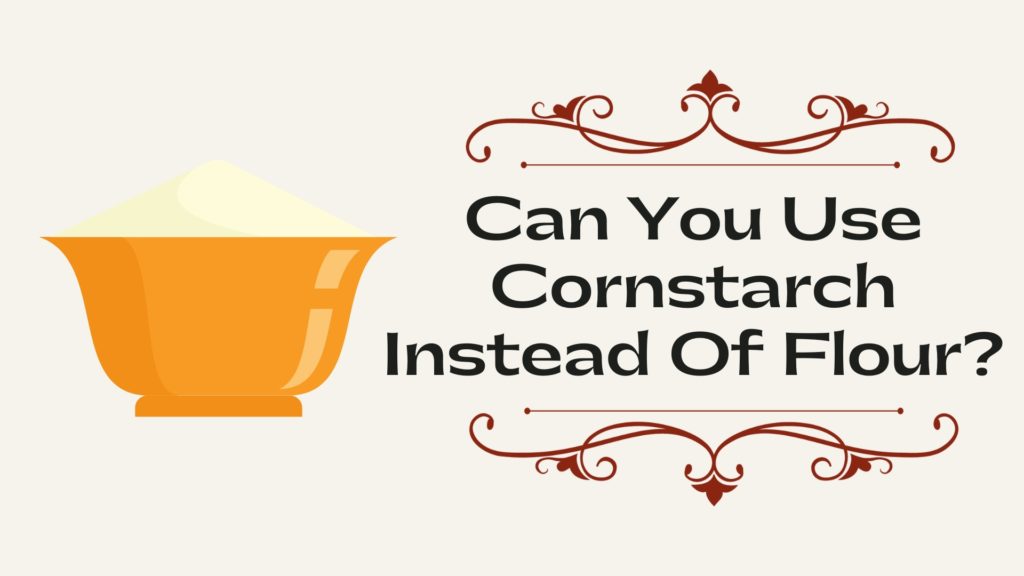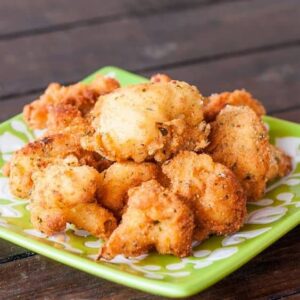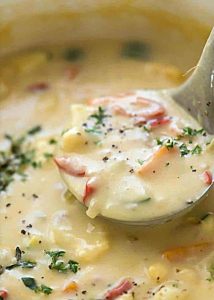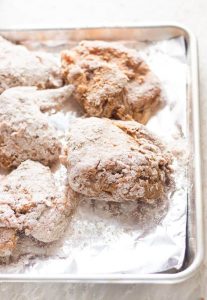
Cornstarch is a starch that is made from corn. While the floor is a starch made from wheat. Both are important in the world of cooking. Maybe you have celiac disease, and you are asking, can you replace flour with cornstarch? Of course, you can. You don’t require being sick to use it. Just like flour, it’s excellent in thickening sauces baking and even frying food. It has numerous health benefits. For the athletes, it has extra calories to help you in training and also in competition. So what’s the difference between flour and cornstarch? Read below to understand the difference.
Difference between Cornstarch and Flour
- Cornstarch comes from corn while flour comes from wheat.
- Cornstarch is gluten-free, unlike the flour. So it has twice the thickening powder when compared to the flour.
- You should mix the flour with hot water, unlike the cornstarch, where you require adding to cold water. If you add cornstarch to hot water, it will become lumpy.
- A mixture of cornstarch will produce a shine/gloss. Floor bread will leave a look that is opaque and cloudy.
- Unlike the floor, cornstarch doesn’t produce lumps.
Preparing the Cornstarch
You can’t make cornstarch at home since it has to undergo several processes. Only industries can make it. They start by breaking down the walls. The maize that we eat is sweet and sugary, and we usually eat it even before it matures completely. The one meant for cornstarch has more starch and is left in the cob until it becomes solid. So once harvested, they have to extract the starch first. In a vast vat, they soak the corn kennel and leave it for one to two days. They intend to loosen the husk and moisten the grain.
Then the next step is to separate the parts. They remove hull and germ and use them to make corn bran as well as corn oil. The next step is separating the endosperm leaving starch and water. Finally, they drain all the water and add fresh water. This will wash the starch pure. The industry then dries it and mills it producing fine powder. They package, and you buy it in stores and supermarkets.
Different Recipes Where You Can Use Cornstarch Instead of Flour
Frying With Cornstarch Instead of Flour
When frying, you can decide to combine flour and cornstarch. But if you don’t have flour, you can use cornstarch alone. Cornstarch will make the food golden and help you achieve the coveted crispiness. The reason being, cornstarch is gluten-free and almost entirely starch. If you were to use flour, which has gluten, the food such as fried chicken wouldn’t turn golden and have crispiness as compared to when you use cornstarch.

If you want to fry chicken, put small pieces of your chicken in the mixture of cooking wine, ginger, and also soy sauce. Drain the marinade and dredge the pieces of chicken in cornstarch. Heat some oil and fry your chicken until they are ready. They should have an excellent brown look.
Note that corn starch is finer compared to flour. If you are not careful, you can easily mess things around. Avoid deep-frying large pieces of meat. If you use cornstarch on large pieces, it will turn brown quickly and burn. Unfortunately, your meat will not have finished cooking. To avoid messing up, put your cornstarch in a sealed container/bag. Add the meat and shake. Remove your meat and put it on a plate then fry it.
Thickening Gravy, Sauces, Or Pie Fillings With Cornstarch

Cornstarch has no taste if you add it to the sauce. However, when thickening the sauce, it will create a glossy appearance. Cornstarch has an advantage over the floor. You only require half of the amount you could have used for flour. Note that cornstarch never mixes well with acidic solutions. If the sauce has acidic/vinegar taste, you should use flour instead of cornstarch. You can also use tapioca starch or even an arrowroot starch. You should also use flour if the sauce is made with fat. Apart from the sauce, you can use it to thicken your gravy, soup and cake and pie filling.
Note that you should not add the cornstarch to a hot mixture directly since it can quickly get lumpy. So combine cold water and cornstarch in equal parts. Add it to your soup or gravy or any other mixture you wish to thicken.
Coating The Meat or Chicken

Did you know that you can use cornstarch to coat the meat? The Asians use it. It makes your meat appealing thanks to the crisp brown coating it creates on the meat. That coating prevents the valuable moisture of inside the meat from getting out. You can use cornstarch when preparing either the deep-fried meat or the pan-fried meat. In both cases, you will first marinate the meat in the mixture of cooking wine and soy sauce. Marinating will make your meat tastier. Put it into your cornstarch.
Unlike the Indians, they marinate the stir-fried meat using a mixture of soy sauce, sherry, and water in the ratio of 1:1:4, respectively. They leave the meat in the mixture for one hour. Drain the marinade before coating your beef/chicken with a mixture of sesame oil and cornstarch. Before removing the pan, you need to brown both sides of your meat quickly.
Baking
Apart from thickening and frying food, you can also use cornstarch for baking goods and coat meat. Remember, both the floor and cornstarch is excellent ingredients of baking. Both can thicken the pie fillings as well as adjust the texture of the good you bake. When you use cornstarch alone, you will bake gluten-free goods.
Conclusion
You don’t need to use flour to thicken, bake, or even fry your food. Cornstarch is a good substitute. Unlike the flour, it’s gluten-free, meaning you will only use a little. It will make your food browner and have coveted crispiness. If whatever you intend to thicken has either vinegar or an acidic taste, you should not use cornstarch. You should also avoid adding it to whatever you are thickening directly since it will become clumpy. You should first mix it with cold water before adding it to whatever you are thickening. When deep frying, avoid cutting large meat since it can make it burn before the meat is ready.

John DiBella is a graduate of The Culinary Institute of America, a cooking enthuthiast and a writer. When he’s not writing blogs about home kitchenware, he enjoys hiking, camping, sailing and cooking.
